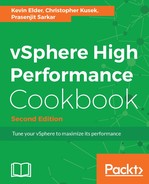Follow these steps to design a redundant vCenter server:
- Make sure that you put this vCenter server on a vSphere-HA-enabled cluster for automated redundancy. Although vSphere HA does protect against operating system and hardware failures, it does not protect against vCenter server service failure.
- For a faster and automated solution for the redundant vCenter server, choose vCenter Server Heartbeat or a third-party solution, such as Microsoft Cluster Services. One advantage of using vCenter Server Heartbeat is that it monitors for vCenter server service failures in addition to the overall operating system failure.
- If your vCenter server is physical, consider the following options to provide redundancy:
- Configure Microsoft Cluster Services between two physical vCenter servers.
- Use P2V software to create a backup of your physical vCenter server to a VM.
- Use P2P software to image your physical vCenter server to another physical machine
Other advantages are that vCenter Server Heartbeat can protect the database server, work with either the physical machine or VM, and automatically maintain the synchronization between the primary and backup servers.
However, the main disadvantages of these solutions are they need to be purchased and maintained over a period of time.
They are also more difficult to configure than merely running a VM in a vSphere cluster with HA enabled. For many environments, HA provides good enough availability with minimal configuration cost or hassle.
It is important to understand that ESXi hosts can do HA restarts even when the vCenter server is down. The vCenter server is needed to configure HA, but not for it to run. HA will restart the VM that runs vCenter in case there is a host failure.
